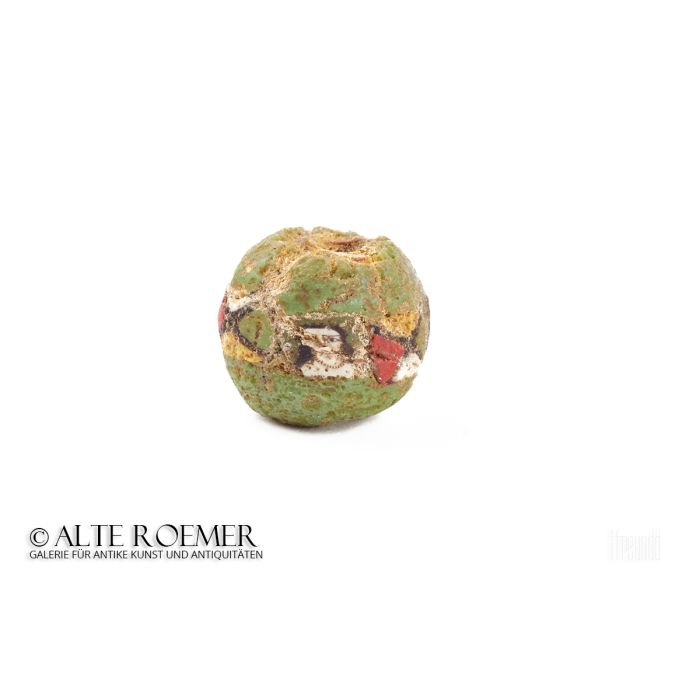Mosaic face bead with female bust
Price: on request
Sold
Object number
AR2403A
| Object: |
Mosaic face bead with female bust
|
| Material: |
Polychrome mosaic glass in green, yellow, red, white and black.
|
| Period: |
1st century BC to 1st century AD. Late Ptolemaic to Roman Imperial period. |
| Description: |
Spherical bead made of mosaic glass. It is decorated by a single band of female busts and geometric shapes (squares divided in four coloured triangles).
|
| Background: |
The single band is typcial for the early face beads from the 1st century AD or sligthly before. Such beads have been found in the whole Roman empire making it difficult to pinpoint the location of manufacturing. But there is the convincing conjecture that such mosaic glass beads were made in Roman Egypt in continuation of the Ptolemaic glass manufacturing tradition, possibly in Alexandria.
|
| Dimensions: |
14mm diameter, 12mm height, hole of ca. 3mm.
|
| Condition: |
Small chips and probably larger pieces reattached or stabilized. The decoration itself is very well preserved and the bead gives an attractive overall impression.
|
| Provenance: |
Acquired by us in 2017 on the German art market. Previously in a Southern German collection. Acquired into the collection in the 1970ies or earlier on the German art market.
|
| References: |
Cf. E. M. Stern, B. Schlick-Nolte, Early Glass of the Ancient World, Ernesto Wolf Collection, p. 410f, no. 149 and 150. Cf. S. M. Goldstein, Pre-Roman and Early Roman Glass in The Corning Museum of Glass, p. 273, no. 817. |
| Literature: |
A very good overview on ancient mosaic beads is given by Lois Sherr Dubin in The History of Beads starting on page 60.
|
| Authenticity: |
We unconditionally guarantee the authenticity of every artefact, all items are subject to our lifetime return policy on authenticity.
|


